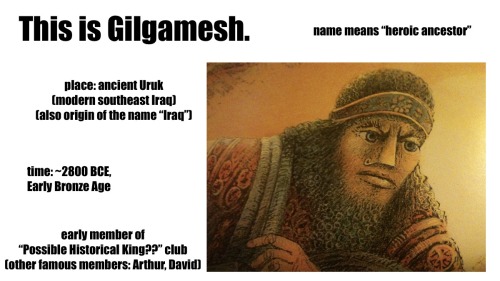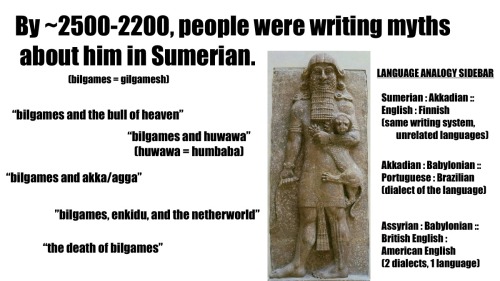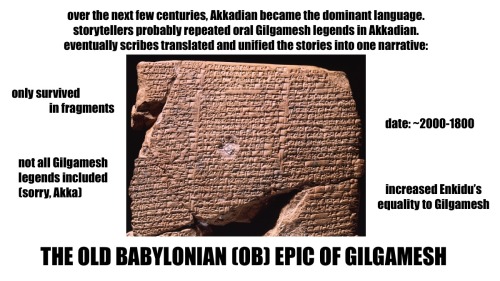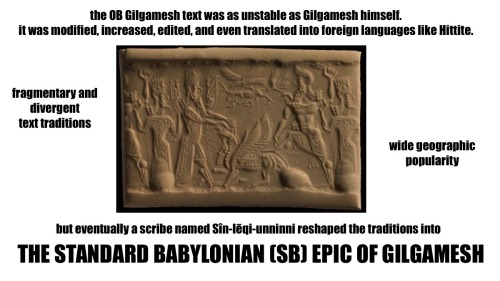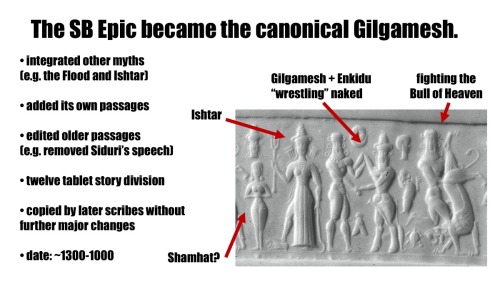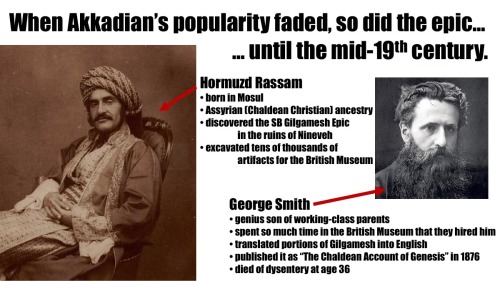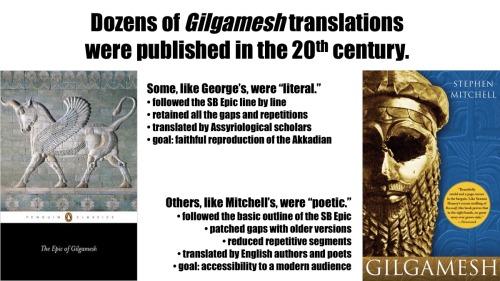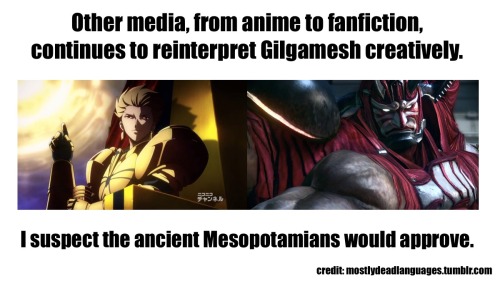Southeast Asians On 4/20 Be Like
Southeast Asians on 4/20 be like
Everyone else: SMOKE WEED EVERYDAY
Us: EAT WEED EVERYDAY @useless-indonesiafacts
More Posts from Philosophical-amoeba and Others



When We Were Very Young A A Milne decorations by Ernest H Shepherd London Methuen & Co Ltd. Thirty Second Edition 1941 (Cheap Form) [First Published 1924]
The 38th poem in the book, “Teddy Bear”, that originally appeared in Punch magazine in February 1924, was the first appearance of the famous character Winnie-the-Pooh.
Once Upon a Time t
Once upon the time t(0) there was a young buck named Butterbean who wanted nothing more than to know his ontological value. Being familiar with the concepts of quantum mechanics he was sadly aware that this was theoretically impossible, but remained unsatisfied with the notion.

In an undying effort to discover the nature of his own existence he set out on a journey to seek the answer from all those most wise and perceiving.
Clearly the first stop was at the front door of Glad the hippopotamus.
Glad was of the notion that all things are ultimately mundane and that it is simply a matter of time and “progress” before esoteric conundrums become simple everyday knowledge. Surely this most assured creature could derive an unknown variable to discover the true nature of Butterbean himself. They were both of the mind at this time t(realist) that all the probabilistic nonsense was clearly just a cop out for those ninnies who fancied themselves finished with discovering the universe.

Alas after decades, or maybe days (no one can be sure given that time itself is a construct commonly defined as the duration of 9,192,631,770 periods of the radiation corresponding to the transition between the two hyperfine levels of the ground state of the cesium 133 atom, and who can really say cesium 133 even exists… really), Glad was forced to admit that he could not tell Butterbean of his ontological state prior to Butterbean’s arrival on his doorstep, nor could he possibly without any reference to his own experience as a literalist hippo, and was forced to admit that this coveted obscure variable was beyond his abilities of perception.
With a sense of hopelessness Butterbean sought out the comfort and guidance of Ol’ Trusty, the Wire Stripper. They adventured together for t(hedonist) to t(fundamentalist) without ever committing to any defined notion as after all, how can you find the answer to a paradox, oxymoron much?

However comfort in ignorance becomes unsettling after you’ve had your fun and Butterbean became restless. There was one more known avenue he had not yet travelled…
With a renewed sense of wonder and determination Butterbean approached the Oak, which shook its branches excitedly upon Butterbean’s arrival to see such a valiant seeker of answers. “Oak, what can you tell me about my ontological value?” asked Butterbean humbly. The Oak remained silent, but a slight breeze rustled loose a few leaves from its massive head which fluttered to the ground and landed lightly at Butterbean’s feet, Butterbean faltered and then turned and retreated thoughtfully sensing that the conversation was over.

Upon further consideration over Δt(orthodox) Butterbean understood Oak’s lesson— the leaves could change position through many methods all resulting in different outcomes, however before any leaf falls, it has not fallen. Butterbean had discovered that no matter who or what observes him, there would be an outcome, but it could not be these interactions which defined the whole of himself, surely he must be something inherently like the leaves of Oak’s mane.
One day, a little time later at approximately t(decision), Butterbean decided to venture forth in search of a method of measurement that excluded observation. Knowing that the existence of alligators had long been debated among those with a higher understanding of the nature of things, he knew he should seek within the mind of that which may or may not exist; namely an alligator (though a unicorn or manticore could have sufficed, they are not quite as easy to find nowadays).

Unfortunately all alligators are actually just dead trees and Butterbean had to once again rethink his strategy.
It occurred to Butterbean, after his most recent experiences, that perhaps his disbelief in alligators had caused their value to be null, distracted in hoping that his mind was not quite that powerful Butterbean mistakenly stomped on a daisy which let out a loud squeal, “watch out dummy!” “OH!” replied Butterbean, “Sorry I didn’t see you there, though come to think of it I’m surprised you even exist as I hadn’t yet observed you my friend.” The daisy straightened herself and smoothing out her petals scoffed and said jeeringly, “you think that you are the only one who exists, eh?” “Well,” began Butterbean thoughtfully, “no, but I don’t understand how anything or anyone has any sort of defined nature without something else purposefully interacting with it, after all, how do you know that you exist?” “Oh for goodness sake,” exclaimed young Daisy, “Of course you’ll remain limited as long as you keep collapsing your wave function with all that introspection!” And she turned her face to the sun clearly dismissing Butterbean and all his angsty questions.

Butterbean, with all known theories exhausted, was still unsatisfied and longed to know the mystery of his own nature of being and the recent dismissal of the daisy weighed heavy on his soul. “Why can she be so satisfied just being,” he wondered, “when I spend all of my time dedicated to the mystery and nature of life but still feel so empty and unfulfilled?” And suddenly it struck him! It had been so obvious all along and basically verbatim the retorts he had only just received from the annoyed flower he had trod on, Butterbean ceased to observe himself and existed infinitely in all possible states of being.


Are humans the new supercomputer?
The saying of philosopher René Descartes of what makes humans unique is beginning to sound hollow. ‘I think – therefore soon I am obsolete’ seems more appropriate. When a computer routinely beats us at chess and we can barely navigate without the help of a GPS, have we outlived our place in the world? Not quite. Welcome to the front line of research in cognitive skills, quantum computers and gaming.
Today there is an on-going battle between man and machine. While genuine machine consciousness is still years into the future, we are beginning to see computers make choices that previously demanded a human’s input. Recently, the world held its breath as Google’s algorithm AlphaGo beat a professional player in the game Go—an achievement demonstrating the explosive speed of development in machine capabilities.
But we are not beaten yet - human skills are still superior in some areas. This is one of the conclusions of a recent study by Danish physicist Jacob Sherson, published in the prestigious science journal Nature.
”It may sound dramatic, but we are currently in a race with technology—and steadily being overtaken in many areas. Features that used to be uniquely human are fully captured by contemporary algorithms. Our results are here to demonstrate that there is still a difference between the abilities of a man and a machine,” explains Jacob Sherson.
At the interface between quantum physics and computer games, Sherson and his research group at Aarhus University have identified one of the abilities that still makes us unique compared to a computer’s enormous processing power: our skill in approaching problems heuristically and solving them intuitively. The discovery was made at the AU Ideas Centre CODER, where an interdisciplinary team of researchers work to transfer some human traits to the way computer algorithms work.
Quantum physics holds the promise of immense technological advances in areas ranging from computing to high-precision measurements. However, the problems that need to be solved to get there are so complex that even the most powerful supercomputers struggle with them. This is where the core idea behind CODER—combining the processing power of computers with human ingenuity—becomes clear.
Our common intuition Like Columbus in QuantumLand, the CODER research group mapped out how the human brain is able to make decisions based on intuition and accumulated experience. This is done using the online game “Quantum Moves”. Over 10,000 people have played the game that allows everyone contribute to basic research in quantum physics.
"The map we created gives us insight into the strategies formed by the human brain. We behave intuitively when we need to solve an unknown problem, whereas for a computer this is incomprehensible. A computer churns through enormous amounts of information, but we can choose not to do this by basing our decision on experience or intuition. It is these intuitive insights that we discovered by analysing the Quantum Moves player solutions,” explains Jacob Sherson.
The laws of quantum physics dictate an upper speed limit for data manipulation, which in turn sets the ultimate limit to the processing power of quantum computers—the Quantum Speed Limit. Until now a computer algorithm has been used to identify this limit. It turns out that with human input researchers can find much better solutions than the algorithm.
"The players solve a very complex problem by creating simple strategies. Where a computer goes through all available options, players automatically search for a solution that intuitively feels right. Through our analysis we found that there are common features in the players’ solutions, providing a glimpse into the shared intuition of humanity. If we can teach computers to recognise these good solutions, calculations will be much faster. In a sense we are downloading our common intuition to the computer” says Jacob Sherson.
And it works. The group has shown that we can break the Quantum Speed Limit by combining the cerebral cortex and computer chips. This is the new powerful tool in the development of quantum computers and other quantum technologies.
We are the new supercomputer
Science is often perceived as something distant and exclusive, conducted behind closed doors. To enter you have to go through years of education, and preferably have a doctorate or two. Now a completely different reality is materialising.
In recent years, a new phenomenon has appeared—citizen science breaks down the walls of the laboratory and invites in everyone who wants to contribute. The team at Aarhus University uses games to engage people in voluntary science research. Every week people around the world spend 3 billion hours playing games. Games are entering almost all areas of our daily life and have the potential to become an invaluable resource for science.
“Who needs a supercomputer if we can access even a small fraction of this computing power? By turning science into games, anyone can do research in quantum physics. We have shown that games break down the barriers between quantum physicists and people of all backgrounds, providing phenomenal insights into state-of-the-art research. Our project combines the best of both worlds and helps challenge established paradigms in computational research,” explains Jacob Sherson.
The difference between the machine and us, figuratively speaking, is that we intuitively reach for the needle in a haystack without knowing exactly where it is. We ‘guess’ based on experience and thereby skip a whole series of bad options. For Quantum Moves, intuitive human actions have been shown to be compatible with the best computer solutions. In the future it will be exciting to explore many other problems with the aid of human intuition.
"We are at the borderline of what we as humans can understand when faced with the problems of quantum physics. With the problem underlying Quantum Moves we give the computer every chance to beat us. Yet, over and over again we see that players are more efficient than machines at solving the problem. While Hollywood blockbusters on artificial intelligence are starting to seem increasingly realistic, our results demonstrate that the comparison between man and machine still sometimes favours us. We are very far from computers with human-type cognition,” says Jacob Sherson and continues:
“Our work is first and foremost a big step towards the understanding of quantum physical challenges. We do not know if this can be transferred to other challenging problems, but it is definitely something that we will work hard to resolve in the coming years.”

Too much sex causes genitals to change shape, beetle study shows
Sexual conflict between males and females can lead to changes in the shape of their genitals, according to research on burying beetles by scientists at the University of Exeter.
The study, published in the journal Evolution, provides new evidence that conflict over how often mating takes place can lead to males evolving longer penis-like organs and females larger ‘claws’ on their genitalia, within ten generations.
“Our research demonstrates the general importance of conflicts of interest between males and females in helping to generate some of the biodiversity that we see in the natural world. It’s fascinating how genital evolution can happen so fast – in ten generations – showing how rapidly evolutionary changes can occur.”
Paul E. Hopwood, Megan L. Head, Eleanor J. Jordan, Mauricio J. Carter, Emma Davey, Allen J. Moore, Nick J. Royle. Selection on an antagonistic behavioral trait can drive rapid genital coevolution in the burying beetle,Nicrophorus vespilloides. Evolution, 2016; DOI: 10.1111/evo.12938


Plantigrade vs. Digitigrade Carnivores - the Polar Bear and the African Lion
The foot structure of many animals plays a critical role in their locomotion and environmental niche, and in carnivores, the clear distinction between plantigrade (walking with the podials and metatarsals both flat on the ground) and digitigrade (walking on the toes, with the heel and wrist permanently raised) animals is most evident.
In plantigrade beasts - which include humans, many rodents, bears, racoons, and opossums - the larger surface area that the many bones provide can act as both a stabilizer and a very effective bearer of great weights. In fact, the big ol’ flighted dinosaurs were plantigrade. At the same time, so were the first (and relatively small) mammals, since both of them needed lots of stability in their feet. The weight-bearing ability and stable platform comes at the cost of speed, as the energy and requirements for movement of so many bones and muscles is much greater than digitigrade feet or unguligrade feet.
Digitigrade animals walk on only their toes, leaving their wrists and ankles permanently raised. This affords more speed, much more silent movement. Cats, birds, and dogs are digitigrade. Digitigrade feet evolved long after plantigrade feet, to fit the niche of mid-sized carnivores. However, they cannot effectively sustain large loads, which is why you cannot use a lion as a pack mule. Well, among other reasons. Really, you just don’t want to try using any mid-sized (or large, in the lion’s case) carnivore as a pack mule.
On the Anatomy of Vertebrates. Richard Owen, 1866.

Oh me! Oh my! Oh, what did you say? That in 1904 Dr. Seuss was born on this day?
Yes that is true and as much as we knew, Turns out he did more than write kids books for you!
Though he may have been a literary tycoon he still found success penning political & industrial cartoons
For instance the bug spray company Flit had him do this poster warning about malaria back in World War Two.
With a vampiric pout and a blood cocktail in hand he introduced us to this Mosquito named Ann.
Though this rhyme may be forced and really contrived, Do check out this blog post from which these lines were derived.
Because on this date, March 2nd, 1904 was born Dr. Seuss, a man we all surely adore!
Happy 113th birthday, Dr. Seuss!
-
 jerukjerukan reblogged this · 8 years ago
jerukjerukan reblogged this · 8 years ago -
 jerukjerukan liked this · 8 years ago
jerukjerukan liked this · 8 years ago -
 panicatthe-garbagebin reblogged this · 9 years ago
panicatthe-garbagebin reblogged this · 9 years ago -
 sennokonkei liked this · 9 years ago
sennokonkei liked this · 9 years ago -
 lyridsca reblogged this · 9 years ago
lyridsca reblogged this · 9 years ago -
 livingonwonderland liked this · 9 years ago
livingonwonderland liked this · 9 years ago -
 riheinorn liked this · 9 years ago
riheinorn liked this · 9 years ago -
 philosophical-amoeba reblogged this · 9 years ago
philosophical-amoeba reblogged this · 9 years ago -
 sandevirae liked this · 9 years ago
sandevirae liked this · 9 years ago -
 drink-my-husbands-wine liked this · 9 years ago
drink-my-husbands-wine liked this · 9 years ago -
 pseudoradical-desu reblogged this · 9 years ago
pseudoradical-desu reblogged this · 9 years ago -
 pseudoradical-desu liked this · 9 years ago
pseudoradical-desu liked this · 9 years ago -
 jakartanights liked this · 9 years ago
jakartanights liked this · 9 years ago -
 xadoheandterra reblogged this · 9 years ago
xadoheandterra reblogged this · 9 years ago -
 soyuncalimero reblogged this · 9 years ago
soyuncalimero reblogged this · 9 years ago -
 soyuncalimero liked this · 9 years ago
soyuncalimero liked this · 9 years ago -
 catch-the-star reblogged this · 9 years ago
catch-the-star reblogged this · 9 years ago -
 asitrita liked this · 9 years ago
asitrita liked this · 9 years ago -
 lyridsca liked this · 9 years ago
lyridsca liked this · 9 years ago -
 13threbagel reblogged this · 9 years ago
13threbagel reblogged this · 9 years ago -
 katsu-not-found reblogged this · 9 years ago
katsu-not-found reblogged this · 9 years ago -
 hvman-natvre reblogged this · 9 years ago
hvman-natvre reblogged this · 9 years ago -
 ask-poveglia liked this · 9 years ago
ask-poveglia liked this · 9 years ago -
 a-starlight-inthegloom-blog reblogged this · 9 years ago
a-starlight-inthegloom-blog reblogged this · 9 years ago -
 a-starlight-inthegloom-blog liked this · 9 years ago
a-starlight-inthegloom-blog liked this · 9 years ago -
 yamineco reblogged this · 9 years ago
yamineco reblogged this · 9 years ago -
 mb-urubuster reblogged this · 9 years ago
mb-urubuster reblogged this · 9 years ago -
 yamineco liked this · 9 years ago
yamineco liked this · 9 years ago -
 lucilliasheyff reblogged this · 9 years ago
lucilliasheyff reblogged this · 9 years ago -
 mb-urubuster liked this · 9 years ago
mb-urubuster liked this · 9 years ago -
 ruinous-catastrophe reblogged this · 9 years ago
ruinous-catastrophe reblogged this · 9 years ago -
 ruinous-catastrophe liked this · 9 years ago
ruinous-catastrophe liked this · 9 years ago -
 floranna2 reblogged this · 9 years ago
floranna2 reblogged this · 9 years ago -
 floranna2 liked this · 9 years ago
floranna2 liked this · 9 years ago -
 courfeyracs-swordcane liked this · 9 years ago
courfeyracs-swordcane liked this · 9 years ago -
 nur-is-tired reblogged this · 9 years ago
nur-is-tired reblogged this · 9 years ago -
 azu203 liked this · 9 years ago
azu203 liked this · 9 years ago -
 nur-is-tired liked this · 9 years ago
nur-is-tired liked this · 9 years ago -
 lawfullykaotic reblogged this · 9 years ago
lawfullykaotic reblogged this · 9 years ago
A reblog of nerdy and quirky stuff that pique my interest.
291 posts


